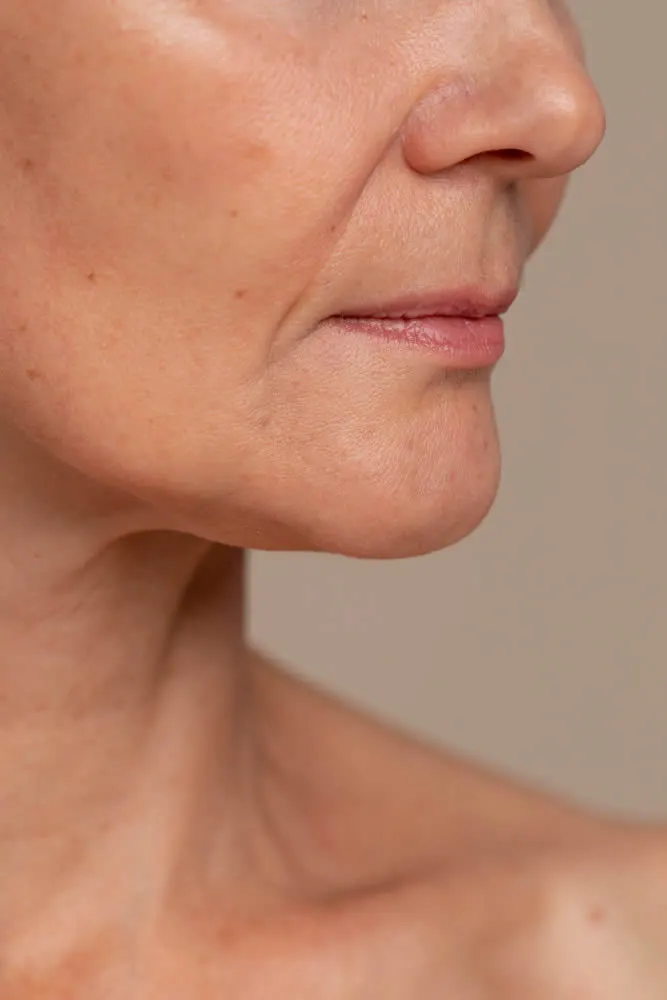What is PhotoDynamic Therapy (PDT)?
Photodynamic Therapy (PDT), a cutting-edge approach that harnesses the power of light and specialized photosensitizing agents to address a wide range of skin conditions. PDT combines science and technology to provide effective solutions for issues such as acne, actinic keratosis, and even certain types of skin cancer, all while promoting healthier, more radiant skin.

What are the uses of PhotoDynamic Therapy?
Photodynamic Therapy (PDT) is an evolving and versatile treatment option employed by dermatologists for many medical challenges, ranging from skin ailments to various cancers, and even some non-malignant conditions.
For Skin Conditions: PDT is frequently suggested for tackling diverse skin conditions. Commonly recommended applications include:
- Psoriasis: A chronic autoimmune condition leading to red, scaly patches on the skin.
- Actinic keratosis: Dry, scaly patches resulting from prolonged sun exposure, carrying a risk of turning cancerous.
- Vitiligo: A condition where patches of skin lose their pigment.
- Bowen’s disease: An early stage of skin cancer.
- Basal cell carcinoma: A prevalent type of skin cancer.
For Cancer Treatment: PDT may offer some patients an avenue for treating a spectrum of cancers. It’s particularly beneficial in areas accessible to direct light exposure. Moreover, apart from primary treatments, PDT can offer symptomatic relief for cases of esophageal and lung cancers.
For Noncancerous Conditions: PDT isn’t just confined to treating cancers. It has proven effective in managing various non-malignant conditions like, urinary tract infections, acute sinusitis, and gastritis, etc.
Beyond the conditions mentioned, PDT has shown potential in treating actinic keratoses, Bowen’s disease, Barrett’s esophagus, and basal cell carcinoma. It also holds promise for other conditions like warts, acne, and extramammary Paget’s disease, which affects the skin around the genitals and anus.
How long will it take to see the effects of PhotoDynamic Therapy?
The timeline to observe the effects of Photodynamic Therapy (PDT) can vary significantly based on individual circumstances. The photosensitizing agent, a crucial component in PDT, is absorbed by all cells within the body. However, a distinguishing factor is that these agents persist longer in abnormal cells than in healthy ones.
For some, the photosensitizing agents accumulate in the unhealthy cells almost instantly post-administration. For others, the process might take longer, ranging from a few hours to several days, before reaching the desired concentration for an effective treatment.
Your specific treatment schedule, depends on the frequency and total number of sessions, and on the type of photosensitizing agent prescribed by your dermatologist.
What occurs during PhotoDynamic Therapy?
Photodynamic Therapy (PDT) is a distinctive procedure that combines light-sensitive medications with specific light sources to target and eliminate abnormal cells. Here’s a step-by-step overview of what transpires during a PDT session:
Administration of Photosensitizer: At the start of the treatment, your dermatologist introduces a photosensitizing agent into your system. This medication might be:
-
- Swallowed as a pill.
- Injected intravenously (through a vein).
- Applied directly onto the skin as a topical solution.
Concentration in Unhealthy Cells: Post-administration, the photosensitizing drugs zero in on cancerous and other abnormal cells. Their primary function is to heighten the sensitivity of these cells to light, setting the stage for the subsequent phase of the treatment.
Illumination of the Target Area: After a predetermined duration post the photosensitizer’s administration, your dermatologist exposes the treatment region to a specific type of light. The choice of light—be it low-power red laser light, blue light, or even natural sunlight—depends on the nature of the photosensitizer employed.
For areas that are internal and harder to reach, such as the throat, airways, or lungs, a specialized instrument called an endoscope is utilized. This thin, flexible tube directs the light and shines upon cells deep within your body.
Destruction of Abnormal Cells: Under the light’s influence, the photosensitizer reacts with oxygen. This results in a chemical response that eradicates the sensitized unhealthy cells, leaving the surrounding healthy cells largely unharmed.
Subsequent Sessions (if required): The initial PDT session might not be the last. Depending on the condition’s severity and the response to treatment, your healthcare provider might recommend additional PDT sessions. The decision regarding the frequency and number of follow-up treatments rests with your healthcare provider’s assessment.
What is the prognosis after Photodynamic Therapy?
Photodynamic Therapy (PDT) is a modern treatment method with most individuals finding the post-treatment phase relatively manageable, allowing them to return to routine activities swiftly. However, certain precautions might be necessary to ensure optimal healing and reduce the risk of complications.
Post-PDT, your dermatologist may offer the following recommendations to safeguard the treated area and promote effective recovery:
- Skin Protection: To assist the treatment area’s healing process, it might be advised to shield the skin. This could involve covering the specific area to minimize exposure and potential irritation.
- Indoor Safety: Depending on the photosensitizer employed during the treatment, you might be advised to remain indoors for a specified period to prevent unnecessary exposure to light.
- Light Avoidance: Post-PDT, direct, intense, or bright indoor lighting might need to be avoided. Such precautions help in averting any unwanted reactions or complications from the lingering effects of the photosensitizer.
- Outdoor Precautions: When stepping outdoors, adorning protective attire is beneficial. Wearing wide-brimmed hats, full-sleeved clothing, and sunglasses can shield the skin from the sun’s rays. It’s particularly vital if the photosensitizer makes you more susceptible to sunlight.
- Special Environments: Areas where light is amplified, such as beaches with the sun reflecting off the water or snowy regions, should be avoided to minimize heightened light exposure.
- Use of Lamps: Strong reading or examination lamps, which emit focused light, should be used with caution or not used at all, based on your dermatologist’s recommendation.
These precautions are typically temporary and primarily aimed at ensuring a successful treatment outcome and mitigating potential side effects.

FAQ About PhotoDynamic Therapy
Are there any side effects of PDT?
Like all medical procedures, PDT may have side effects. Common ones include redness, swelling, and sensitivity in the treated area. Always discuss potential side effects with your dermatologist.
Can PDT be combined with other treatments?
In some cases, PDT can be combined with other therapies for enhanced outcomes. Always consult with your dermatologist to discuss possible combinations suitable for your condition.
What should I do if I experience complications post-PDT?
If you notice any unexpected side effects or complications, it’s crucial to contact your dermatologist immediately for guidance and potential remedies.
Is PDT painful?
Most patients report minimal discomfort during PDT. Some might experience a slight stinging or burning sensation, which usually subsides soon after treatment.
Is there a dermatologist near me in West Palm that offers PhotoDynamic Therapy?
Yes. At our West Palm dermatology office we offer PhotoDynamic Therapy to patients from West Palm and the surrounding area. Contact our office today to schedule an appointment.

